14 years one-stop China custom CNC machining parts factory
 88 |
Published by VMT at May 14 2025 | Reading Time:About 5 minutes
88 |
Published by VMT at May 14 2025 | Reading Time:About 5 minutes
In the realm of precision manufacturing, selecting the appropriate machining process is crucial. With the advent of advanced technologies, manufacturers now have options like Mill-Turn machining and traditional CNC machining. Each offers distinct advantages, and understanding their differences is essential for optimizing production efficiency, cost, and quality.
Choosing Between Mill-Turn and Traditional CNC Machining
Mill-Turn machining integrates milling and turning operations into a single setup, enhancing efficiency for complex parts. Traditional CNC machining, involving separate milling and turning processes, is often more cost-effective for simpler components. The optimal choice depends on part complexity, production volume, and precision requirements.
Delving Deeper into Machining Processes
To make an informed decision, it's important to explore the fundamentals of CNC machining, understand the capabilities of both traditional and Mill-Turn methods, and analyze their respective advantages, disadvantages, and applications.
Computer Numerical Control (CNC) machining is a subtractive manufacturing process where pre-programmed software dictates the movement of factory tools and machinery. This technology allows for high precision and repeatability in producing complex parts.
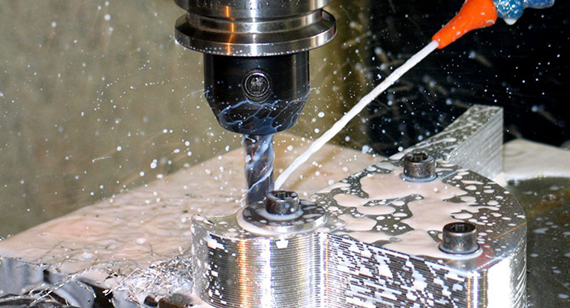
CNC Milling
CNC milling involves a rotating cutting tool that moves along multiple axes to remove material from a stationary workpiece. It's ideal for creating intricate shapes, slots, holes, and contours. Milling is highly versatile and suitable for a wide range of materials and part geometries.
In CNC turning, the workpiece rotates while a stationary cutting tool removes material. This process is optimal for producing cylindrical parts like shafts, rods, and bushings. Turning is known for its efficiency and ability to achieve tight tolerances on round components.
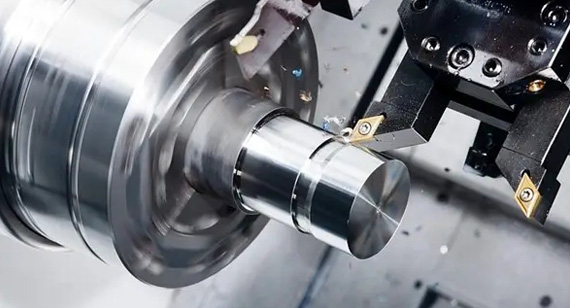
Mill-Turn machining combines the capabilities of milling and turning in a single machine setup. This hybrid approach allows for the complete machining of complex parts without multiple setups, reducing handling time and potential errors. Mill-Turn machines are equipped with both rotating spindles and milling tools, enabling the production of intricate components with high precision.
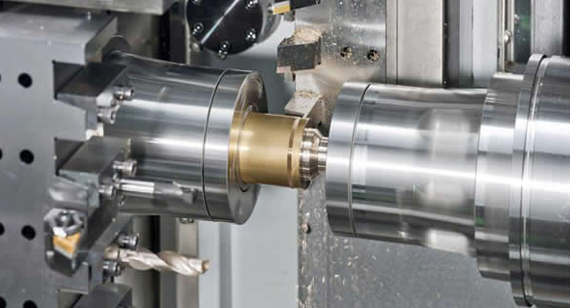
Choosing the right machining approach—Mill-Turn or traditional CNC machining—can significantly affect your project's outcome in terms of cost, efficiency, and quality. While both methods are widely used in CNC machining services, each is designed for different production scenarios. Mill-Turn combines both milling and turning operations in one setup, offering greater flexibility for complex parts. On the other hand, traditional CNC machining separates milling and turning processes, which can be more suitable for simpler parts or batch production. To help you decide which method best fits your application, let’s explore how these two approaches compare in key areas such as versatility, precision, efficiency, cost, and adaptability.
Versatility
Mill-Turn machines are unmatched in terms of versatility. They can perform both turning and milling operations in a single setup, making them ideal for parts that require complex features on multiple surfaces. With fewer setups and tool changes, Mill-Turn machining drastically reduces production time and setup errors. This makes it particularly useful for manufacturing CNC machining parts with intricate geometries, compound angles, or multiple operations. Traditional CNC machining, although still versatile, may require multiple machines (such as a separate lathe and mill), which means more handling, more fixtures, and longer setup times. If your project involves simple parts with standard geometries, traditional CNC methods may suffice. But for multifunctional parts, Mill-Turn offers a clear advantage.
Precision and Quality
Precision is a critical factor in CNC machining, especially for industries like aerospace, medical, and optics. Mill-Turn machining excels in maintaining high precision because it eliminates the need to transfer the part between machines. This minimizes alignment errors and reduces the risk of human-induced tolerances. Because everything is done in one machine, it also allows for better control over surface finishes and dimensional accuracy. Traditional CNC machining can also achieve high precision but often depends on the operator’s ability to maintain consistent setups across multiple machines. For tight-tolerance parts with complex geometries, Mill-Turn provides better control and consistency, while traditional CNC machining is sufficient for less demanding applications.
Production Speed and Efficiency
When it comes to speed, Mill-Turn machining offers significant benefits. It combines multiple operations into one streamlined process, reducing the overall machining time, especially for complex components. Since there's no need to remove the part from one machine and mount it into another, the entire production flow is smoother and faster. Traditional CNC machining, however, can be slower because parts need to be moved between separate machines, re-fixtured, and re-aligned. For high-volume runs of complex parts, the time savings with Mill-Turn can translate into lower per-part costs and faster turnaround times. But for short runs of simple parts, traditional machining may still be efficient enough without the added machine cost.
Operational Costs
Mill-Turn machines typically have a higher upfront investment due to their multifunctional capabilities and advanced technology. They also require skilled programmers and operators, which can increase labor costs. However, these higher initial costs are often offset by the reduction in setup times, labor hours, and tooling needs—especially for complex, high-precision parts. Traditional CNC machining usually involves a lower capital investment, making it attractive for small shops or projects with budget constraints. But when multiple setups are required, labor and time costs can quickly add up. In the long run, Mill-Turn can be more cost-effective for complex projects, while traditional CNC is more affordable for simpler workpieces.
Adaptability
Mill-Turn machining is incredibly adaptable to a wide range of industries and part types. From medical implants to aerospace brackets, it handles varying geometries, materials, and tolerances with ease. Because it can perform diverse operations without changing machines, it adapts quickly to design changes and short-run customization. Traditional CNC machining also offers adaptability but requires more planning and coordination between machines, especially when transitioning between milling and turning operations. For CNC machining factories that frequently work with complex, custom-designed parts, Mill-Turn machining is the more flexible solution. But if your production requires consistent, repeatable parts with minimal complexity, traditional CNC machining provides sufficient adaptability without unnecessary overhead.
Here is a comparison table summarizing the key differences between Mill-Turn and Traditional CNC Machining based on the categories from the previous section:
| Comparison Criteria |
Mill-Turn Machining |
Traditional CNC Machining |
| Versatility |
Combines milling and turning in one setup; ideal for complex, multi-featured parts. | Requires separate machines; suitable for simpler parts and dedicated processes. |
| Precision & Quality |
High precision due to fewer setups; consistent surface finish and tight tolerances. | Good precision, but can be affected by multiple setups and transfers. |
| Production Speed & Efficiency |
Faster production by eliminating machine changes and setups. | Slower due to part transfers between machines; more setup time required. |
| Operational Costs |
Higher initial investment; lower long-term cost for complex parts due to time savings. |
Lower machine cost; higher labor and time costs for multi-step operations. |
| Adaptability |
Highly adaptable for custom, short-run, or multi-process parts across various industries. | Flexible for straightforward, high-volume parts; less ideal for complex geometry. |
This table offers a clear side-by-side view for readers considering milling and turning vs. traditional CNC machining methods.
Choosing the right machining approach is critical to achieving manufacturing efficiency, cost-effectiveness, and part quality. Mill-Turn machining and traditional CNC machining each offer unique benefits and drawbacks, depending on the complexity of the part, batch size, and project requirements. In this section, we’ll compare both methods to help you make informed decisions tailored to your application needs.
Advantages and Disadvantages of Mill-Turn
Advantages:
Disadvantages:
Advantages and Disadvantages of Traditional CNC Machining
Advantages:
Disadvantages:
Certainly! Here's a clear and concise comparison table outlining the advantages and disadvantages of Mill-Turn vs. Traditional CNC Machining:
| Category |
Mill-Turn Machining |
Traditional CNC Machining |
| Key Advantage 1 |
Combines milling and turning in a single setup, reducing handling and setup time | Lower machine cost; ideal for shops with budget constraints |
| Key Advantage 2 |
Improved accuracy due to fewer setups and higher geometric consistency | Simpler programming and operation for single-process parts |
| Key Advantage 3 |
Faster cycle times for complex, multi-featured parts | Efficient for high-volume runs of simple or repeatable parts |
| Key Advantage 4 |
Capable of producing highly complex geometries with fewer operations | Easier to maintain and repair; machine downtime impacts only one part of the process |
| Key Advantage 5 |
Reduces tooling, fixture needs, and shop floor space | More flexible in distributing work across multiple machines |
| Main Disadvantage 1 |
Higher initial cost of investment | Requires multiple setups, increasing production time and potential for alignment errors |
| Main Disadvantage 2 |
More complex to program and operate, requiring advanced skills and software | Less suitable for complex or high-tolerance components |
| Main Disadvantage 3 |
Maintenance is more complex and can halt all operations if one function fails | Manual part transfer increases labor and reduces throughput |
| Main Disadvantage 4 |
Not cost-effective for simple parts or low-complexity applications | Requires more physical space, fixtures, and human supervision |
This table helps manufacturers and engineers decide which process best suits their project based on part complexity, cost, production volume, and shop capabilities.
When selecting a machining process, application fit is critical. While both Mill-Turn and traditional CNC machining can produce high-precision components, they are optimized for different types of production scenarios. Mill-Turn machining is ideal for complex parts requiring multiple operations, while traditional CNC machining is better suited for simpler components or high-volume runs of uniform parts. Understanding which process serves which industry best can help ensure superior quality, cost-effectiveness, and productivity.
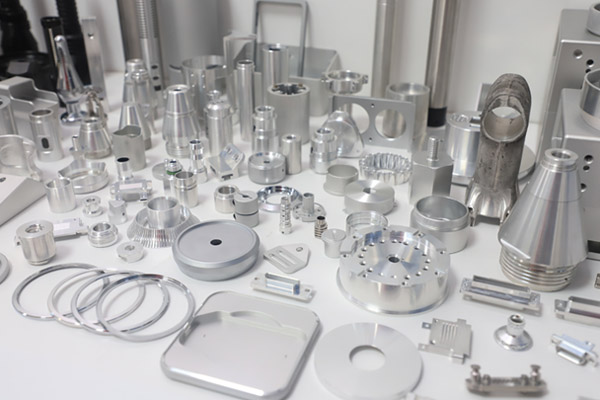
Aerospace
Defense and Military Parts
Automation Equipment
Choosing between Mill-Turn and traditional CNC machining is not a one-size-fits-all decision. It depends on various factors such as part complexity, production volume, tolerances, and cost constraints. Understanding the specific conditions in which each method excels will help you make an informed decision that maximizes efficiency, precision, and cost-effectiveness. This section outlines when to choose Mill-Turn vs. when traditional CNC machining may be the better option.
When to Choose Mill-Turn?
Mill-Turn machining combines the best of CNC milling and turning, offering a hybrid solution for manufacturing complex and high-precision components. But when is it truly the best choice? Let’s explore the specific scenarios where Mill-Turn adds the most value.
Complex Geometries and Multi-Process Parts
Mill-Turn machining is the go-to choice when dealing with intricate parts that require both turning and milling operations, especially in a single cycle. For example, components with off-center holes, threads, slots, and complex contours benefit significantly from this process. Rather than transferring the part between multiple machines, Mill-Turn allows you to complete the entire process in one setup, which minimizes handling errors, reduces misalignment risks, and ensures consistent quality. Industries such as aerospace, medical, and electronics often demand this level of sophistication.
Reduced Production Time and Costs
While the initial setup for Mill-Turn machining may appear more expensive than traditional CNC machines, the savings become evident in the long run—especially for complex, high-value parts. Mill-Turn reduces the number of setups, tool changes, and manual intervention. This consolidated workflow results in faster cycle times, fewer fixtures, and lower labor costs. For manufacturers needing to optimize throughput without compromising on quality, Mill-Turn offers a compelling return on investment.
High Precision Industries
Industries that demand exceptional accuracy—such as defense, optics, and medical—favor Mill-Turn machines. They provide tight tolerances, superior surface finishes, and higher repeatability, which are essential for mission-critical components. If your project involves tolerances within microns or geometries that require fine detail, Mill-Turn’s simultaneous machining capabilities are likely your best option.
When to Choose Traditional CNC Machining?
Although Mill-Turn machines offer versatility, traditional CNC machining remains indispensable for many manufacturing needs. It is especially effective for simpler parts, dedicated processes, and cost-sensitive projects. Below are the key scenarios where traditional CNC machining outperforms or complements Mill-Turn technology.
Dedicated Production Processes
For high-volume production of uniform parts, traditional CNC machines such as mills and lathes offer unmatched efficiency. Since each machine is optimized for a specific operation, it can achieve consistent quality at a lower operational cost. This setup is ideal for parts that don’t require multi-axis processing or hybrid geometries. Additionally, dedicated CNC cells can be automated and scaled more easily than integrated Mill-Turn systems.
Simpler Part Geometries
When manufacturing parts with straightforward shapes—such as brackets, spacers, housings, or flat components—traditional CNC machining is often sufficient and more economical. These parts typically do not require the multi-axis complexity that Mill-Turn provides. Thus, sticking with traditional methods can streamline operations and reduce unnecessary overhead.
Cost Considerations
Mill-Turn machines are typically more expensive to purchase, maintain, and operate. For shops with budget constraints or for low-volume production of simple parts, traditional CNC machining offers a more accessible and cost-effective solution. You avoid over-investing in technology that exceeds your project's needs. Additionally, traditional machines allow for easier operator training and simplified maintenance.
Flexibility in Production Scheduling
In environments where production schedules shift frequently or different machines are used for different operations, traditional CNC machining provides better flexibility. Each task can be reassigned to a specialized machine depending on availability or urgency. This modular approach to production is valuable for custom job shops or contract manufacturers handling a wide variety of parts.
Here is a clear and professional comparison table summarizing the applicability of Mill-Turn vs. Traditional CNC Machining based on different project needs:
| Criteria |
Mill-Turn Machining |
Traditional CNC Machining |
| Best for |
Complex, multi-process parts requiring turning and milling in one setup | Simpler geometries and single-operation parts |
| Ideal Industries |
Aerospace, Medical, Optics, Defense, Electronics | Automotive, General Industrial, Consumer Goods |
| Part Complexity |
Excellent for intricate parts with combined features (slots, threads, angled holes) | Suited for basic shapes (brackets, housings, flat or cylindrical parts) |
| Production Efficiency |
High—due to fewer setups, integrated operations, and reduced handling time | Moderate—requires multiple setups or machines for complex parts |
| Precision & Tolerance |
Superior—tight tolerances and high repeatability | Good—for most standard tolerances |
| Setup & Operation Costs |
Higher initial investment but cost-effective for complex parts and long-term runs |
Lower machine and maintenance costs—cost-effective for simple, high-volume parts |
| Tooling & Machine Investment |
Requires advanced multi-tasking machines with higher operator skill | Uses separate milling or turning machines—easier to train and maintain |
| Flexibility & Scheduling |
Best for dedicated, continuous runs of complex parts | Offers better flexibility for job shops with diverse parts and short lead times |
| Surface Finish & Detailing |
Excellent surface finishes and micro-detailing in one cycle | Adequate, may require secondary operations for fine finishes |
| Automation Potential |
High—ideal for integrating robotics and unattended machining | Medium—can be automated, but may require human intervention between setups |
This table can help guide readers in selecting the most suitable machining process for their project, whether they need the advanced capabilities of Mill-Turn or the efficiency of traditional CNC machining.
In the highly competitive world of precision manufacturing, selecting the right CNC machining factory can be the difference between a successful project and a costly mistake. Many companies struggle to find a machining partner that not only offers state-of-the-art equipment but also delivers consistent quality, flexible production capabilities, and expert engineering support. This is where VMT steps in—bridging the gap between demanding industry requirements and innovative CNC machining solutions.
At VMT, we specialize in both Mill-Turn machining and traditional CNC machining services, enabling us to serve a diverse range of industries with unmatched precision and efficiency. Whether you're developing intricate aerospace components or large-volume automotive parts, our factory is equipped with the technology and expertise to deliver consistent results. By integrating milling and turning operations into a single Mill-Turn platform, we reduce setup time, increase production efficiency, and minimize errors—offering our clients faster turnaround and reduced costs for complex parts.
VMT operates with a customer-first philosophy, offering end-to-end CNC machining services including material sourcing, design optimization, prototyping, full-scale production, and rigorous quality control. We work with a wide range of metals and plastics, and our capabilities extend across CNC Swiss machining, CNC milling, CNC turning, and advanced multi-axis machining. This versatility allows us to tailor machining strategies to the specific needs of each project, whether it involves tight tolerances, high-volume production, or intricate geometries.
If you are unsure which process—milling and turning vs. traditional CNC machining—is right for your part, our engineers will evaluate your requirements and recommend the most cost-effective and technically sound solution. From high-precision CNC machining parts to fully customized production lines, VMT is your trusted partner for quality, reliability, and performance.
Learn more about our CNC Swiss machining vs. traditional CNC machining comparison or visit our full services overview to explore how VMT can support your next machining project.
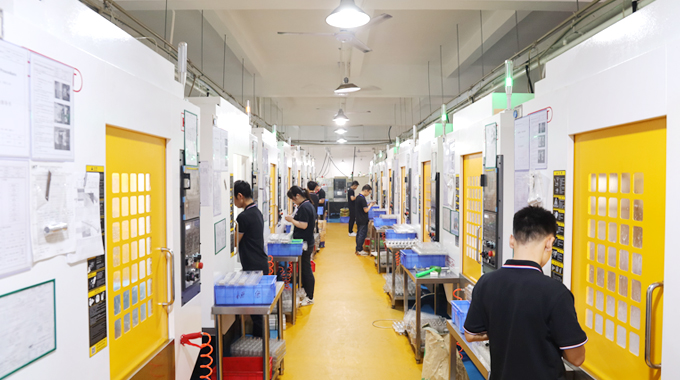
Choosing between Mill-Turn machining and traditional CNC machining is not a matter of which process is universally better—it's about selecting the one that aligns with your specific project requirements. While Mill-Turn machining offers superior efficiency, precision, and the ability to handle complex geometries in a single setup, traditional CNC machining remains a powerful and cost-effective solution for simpler parts, larger production batches, or when distinct milling and turning operations are preferred.
Understanding the key differences in versatility, production speed, cost, and applicability can help engineers and project managers make informed decisions. Mill-Turn machining excels in industries where high precision, multi-process integration, and reduced handling are crucial—such as medical devices, aerospace components, and intricate automation equipment. On the other hand, traditional CNC machining is often ideal for applications with well-defined processes, tight budgets, or lower complexity requirements.
At the heart of a successful machining project lies a knowledgeable partner. VMT CNC machining factories are equipped with both Mill-Turn and traditional CNC technologies, supported by experienced engineers who assess each project's goals and constraints before recommending the best machining path. From high-quality CNC machining parts to fast turnaround CNC machining services, VMT ensures that clients receive optimal performance, reliability, and value at every stage.
Still unsure which machining method fits your part design? Explore our CNC machining services page for technical insights, or contact our experts to request a custom quote tailored to your application.
1. Is Mill-Turn more expensive than conventional CNC machining?
Yes, Mill-Turn machines are generally more expensive due to their advanced capabilities and integration of both milling and turning functions. However, they can reduce overall project costs by minimizing setups, improving precision, and shortening cycle times—especially for complex parts.
2. What is the difference between milling and turning in CNC?
CNC milling uses a rotating tool to cut stationary workpieces, ideal for complex surfaces and cavities. CNC turning rotates the workpiece against a stationary tool, best for symmetrical cylindrical parts. Mill-Turn combines both for maximum flexibility.
3. What is the difference between CNC and milling machines?
CNC is a broad category that includes milling, turning, and other automated processes. A milling machine is a specific type of CNC machine focused on cutting and shaping using rotating tools.
4. What is the difference between conventional machining and CNC machining?
Conventional machining is manually operated and depends on human control, while CNC machining is automated, offering higher precision, repeatability, and efficiency—ideal for modern production environments.
5. What is the difference between CNC milling and conventional milling?
CNC milling automates tool paths through programming, ensuring consistency and high accuracy. Conventional milling requires manual adjustment, which is slower and less precise.
6. What are the disadvantages of CNC milling?
Disadvantages include higher upfront machine costs, the need for skilled programmers, and reduced flexibility for extremely simple, low-volume jobs compared to manual machining.
7. What is the difference between CNC milling and hand milling?
CNC milling uses pre-programmed instructions for repeatable, complex shapes. Hand milling relies on operator skill and is limited in complexity and consistency.
8. What are the advantages of conventional milling?
Conventional milling is cost-effective for simple tasks, requires lower initial investment, and is flexible for quick, small-scale work without programming.
9. What are the three basic types of milling machines?
The three main types are vertical milling machines, horizontal milling machines, and universal milling machines—each designed for different tasks and part geometries.
10. What is the difference between Mill-Turn and Mill-Turn?
There is no difference—this may be a duplication. However, it’s worth noting that Mill-Turn machines come in various configurations, such as single-spindle or multi-spindle types, with varying axis capabilities.
11. Is turning cheaper than milling?
Yes, turning is typically cheaper for cylindrical parts due to faster production times and simpler setups, but milling is better for parts with complex geometries.
12. What are two disadvantages of CNC milling or turning compared to hand producing parts?
Higher initial investment and the need for skilled programming are two main disadvantages compared to manual methods.
13. Is CNC a type of milling?
No. CNC is a broader technology that includes milling, turning, drilling, and other machining methods controlled by computer programs.
14. What is conventional machining?
Conventional machining refers to manual machine operations like lathes, mills, and drills without computer automation. It’s used for low-volume or prototype work.
15. What is the difference between CNC machining and Swiss machining?
Swiss machining is a type of CNC turning optimized for long, small-diameter parts. It offers exceptional precision and is ideal for industries like medical and aerospace.
16. What is the difference between CNC turning and CNC milling?
CNC turning spins the part against a cutting tool, while CNC milling uses a spinning tool against a fixed part. Each suits different shapes and complexity levels.
17. What is the difference between CNC machine tools and CNC milling machines?
CNC machine tools include a wide variety of machines—milling, turning, EDM, etc. CNC milling machines are specifically used for cutting operations with rotating tools.
18. Which country is best for CNC machining?
Countries like Germany, Japan, the United States, and China lead in CNC machining. China, in particular, offers cost-effective and scalable CNC machining services for global clients.
19. What is the difference between CNC, lathes, and milling machines?
CNC refers to the computer-controlled system. Lathes rotate parts for cutting (turning), while milling machines rotate tools to remove material. CNC can control both types.
